The press are reporting that the Royal family are setting  up a vineyard in Windsor Great Park, which was for many centuries the private hunting ground of Windsor Castle, dating back to the mid-13th century. More than 16,000 vines will be planted and the grapes grown will be Chardonnay, Pinot Meunier and Pinot Noir, in order to make Sparkling Wine.
up a vineyard in Windsor Great Park, which was for many centuries the private hunting ground of Windsor Castle, dating back to the mid-13th century. More than 16,000 vines will be planted and the grapes grown will be Chardonnay, Pinot Meunier and Pinot Noir, in order to make Sparkling Wine.
The Duke of Edinburgh is apparently heavily involved in the project, which is being advised by Chapel Down founder Stephen Skelton MW. The news comes as new figures revealed English wines enjoyed their most successful year ever in 2010, with a record 30,346 hectolitres produced – the equivalent of over four million bottles.
However this is not the first time that Windsor has produced grapes for the Royal family – Richard II (1367 – 1400) had a vineyard at the little park at Windsor for the use of the castle. This was still in use in Edward IV’s reign (15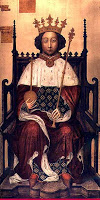 37 – 1553) when the King entertained Louis de Bruges, Governor of Holland in his ‘Vineyard of Pleasour,’ at Windsor.
37 – 1553) when the King entertained Louis de Bruges, Governor of Holland in his ‘Vineyard of Pleasour,’ at Windsor.
We know that wine making in England goes back to Roman times – Tacitus writes that vineyards were planted by the Romans in Britain. We also suspect that the Wrotham Pinot is an indigenous grape variety of our own that could have been grown in Roman times (see my Blog Northern Wines). Wine making continued after the Romans left – the Venerable Bede (672 / 673 – 735) wrote about the tithe on wine which was common in Kent, Surrey, and other southern counties.
The Normans recorded 46 vineyards in southern England, from East Anglia through to modern day Somerset in the Domesday Book (1086).
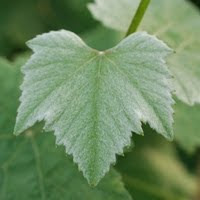 In fact London and its surrounding areas had vineyards – land at East Smithfield was converted into a vineyard, and held by four successive constables of the Tower, in the reigns of Rufus, Henry and Stephen.
In fact London and its surrounding areas had vineyards – land at East Smithfield was converted into a vineyard, and held by four successive constables of the Tower, in the reigns of Rufus, Henry and Stephen.
At the time of the Norman conquest several new plantations of vines seem to have been made – amongst them was the village of Westminster, and at Holburn where “William the chamberlain pays 6s a year to the king’s sheriff for the land on which his vineyard is situated.”
In Norman times the Isle of Ely was called the Ile de Vignes (the Island of Vines) and the bishop of which received three or four tons of wine, yearly, for his tithe.
The English historian William of Malmesbury (1095 / 96 – 1143) asserts that the vale of Gloucester produced, in the twelfth century, wine as good as many of the provinces of France: “There is no province in England hath so many, or such good vineyards, as this country, either for fertility or sweetness of the grape; the wine whereof carrieth no unpleasant tartness, being not much inferior to French in sweetness”.
By the time King Henry VIII ascended the throne there were 139 sizeable vineyards in England and Wales – 11 of them owned by the Crown, 67 by noble families and 52 by the church.
Most of these vineyards were own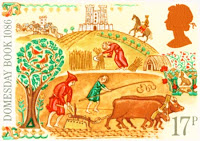 ed by the Church and production was concentrated around Abbeys and Monasteries. One example was the Abbey of Abingdon where the mediaeval vineyard site is currently being used by Bothy Vineyard.
ed by the Church and production was concentrated around Abbeys and Monasteries. One example was the Abbey of Abingdon where the mediaeval vineyard site is currently being used by Bothy Vineyard.
Similarly, Pilton Manor in Somerset boasted a vineyard belonging to the Abbey of 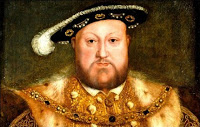 Glastonbury. There is an argument that Henry VIII’s dissolution of the Monasteries marked the demise of wine making in England.
Glastonbury. There is an argument that Henry VIII’s dissolution of the Monasteries marked the demise of wine making in England.
However vineyards survived as part of the estates of the aristocracy, as in France. Samuel Pepys (1633 – 1703) wrote that he attended an event at the home of his friend and fellow naval official, Sir William Batten, who lived on a country estate in the area.
Pepys was full of praise for Sir Batten’s drink, writing that “the whole company said they never drank better foreign wine [than this one] in their lives”.
We do not know precisely which grapes were grown in England but the plant collector and botanist Peter Collinson (1694 – 1768) wrote “Oct. 18th 1765.
I went to see Mr. Roger’s vineyard, at Parson’s Green, all of Burgundy grapes,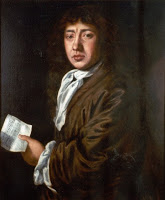 and seemingly all perfectly ripe. I did not see a green half-ripe grape in all this great quantity. He does not expect to make less than fourteen hogsheads of wine.
and seemingly all perfectly ripe. I did not see a green half-ripe grape in all this great quantity. He does not expect to make less than fourteen hogsheads of wine.
The branches and fruit are remarkably large, and the vines very strong.” Parson’s Green is in the London Borough of Hammersmith and Fulham!
So, as you can see both the Royal Family, Windsor, London and the Southern Counties have a long history of wine making!

